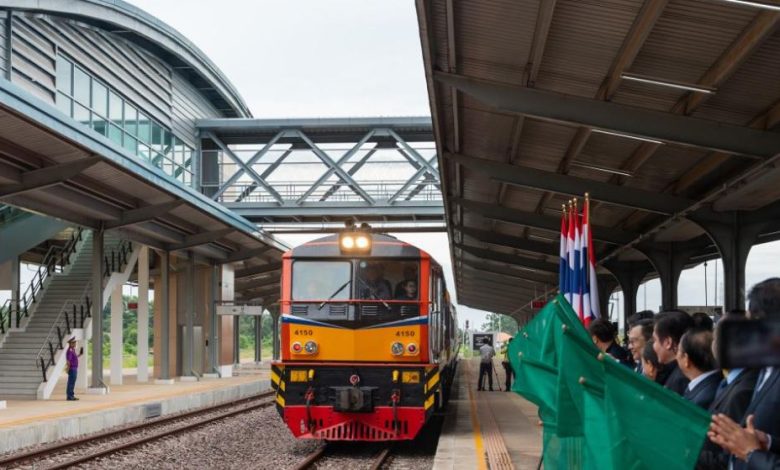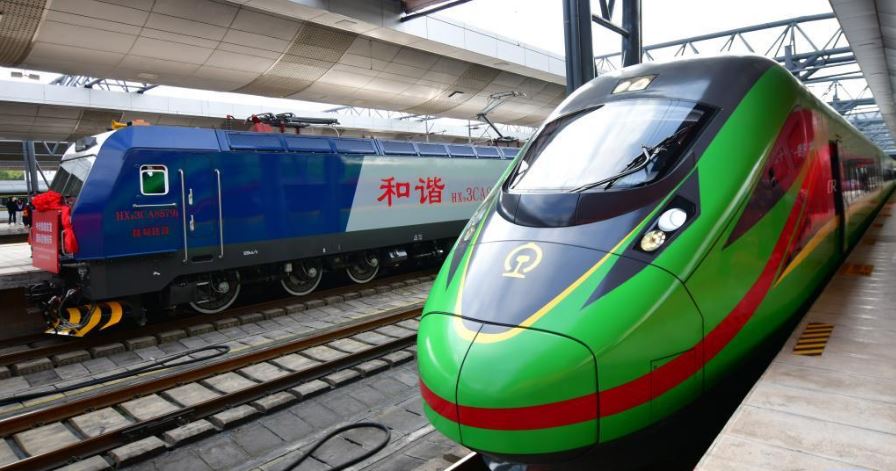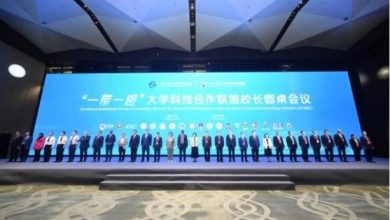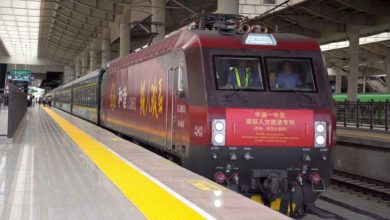Laos and Thailand Cross-Border Passenger Train Service Leads to Rebuilding Railway Silk Road

- Laos and Thailand Cross-Border Passenger Train Service Leads to Rebuilding Railway Silk Road
- New generation of trains, Rapid No. 133 and Rapid No. 134, are linking Asian connectivity
- Laos and Thailand rail is a strategic transportation network aiming to improve connectivity and support the development in Mekong sub-region and Southeast Asia: Railway Official
- The China-Laos Railway is another international milestone connectivity project that handled over 222,000 cross-border passenger trips as of July 23,2024.
By: Muhammad Arif, Editor NSN.Asia
Beijing: The new generation of trains; Rapid No. 133 and Rapid No. 134, are bridging Asian countries as the passenger train service between Vientiane of Laos and Bangkok of Thailand commences cross-border travel operation.
The Thailand-Laos train has started operations on July 23, running between Krung Thep Aphiwat Central Station in Bangkok and Khamsavath Railway Station in Vientiane.
Rapid No. 133 train, the first train departing from Bangkok, carryied hundreds of passengers who witnessed and experienced the commencement of the Thailand-Laos cross-border passenger traveling. The Thailand-Laos train service not only links the two countries but also boosts people to people exchanges in South East Asia.


The Rapid No. 134 train returned back to Bangkok on July 25, 2024.
The newly launched cross-border passenger train service, covers a total distance of about 654 km. It has become a new travel option connecting the capitals of Thailand and Laos.
The journey time between Krung Thep Aphiwat Central Terminal in Bangkok, and Khamsavath railway station in Lao capital, Vientiane, is 12 hours.
The railway enthusiast and tourists lauded their travel experiences on Thailand and Laos cross-border passenger train as more convenient and comfortable way to travel between the two countries.

Ticket prices for the trains are set in Baht, but passengers can pay in Kip based on the exchange rate of the bank on the day of purchase.
For the passenger fares on the Lao-Thai railway, the initial rates for each type of seat are as follows:
Vientiane to Nong Khai: Second class air-conditioned seat and sleeping berth, 80,000 Kip or 120 Baht; third class fan-cooled seat, 47,000 Kip or 70 Baht.
Vientiane to Udon Thani: Second class air-conditioned seat and sleeping berth, 133,500 Kip or 200 Baht; third class fan-cooled seat, 67,000 Kip or 100 Baht.
Vientiane to Bangkok: Second class air-conditioned seat and sleeping berth, upper berth 523,000 Kip or 784 Baht, lower berth 583,000 Kip or 874 Baht; second class air-conditioned adjustable seat, 383,000 Kip or 574 Baht; third class fan-cooled seat, 187,500 Kip or 281 Baht.
The Thailand-Laos train route is currently running trial operations following its launch, with more concrete schedules to follow once trials have been completed.
Construction of a rail project connecting Los Angeles International Airport to the city’s metro rail system, began in 2019, and is expected to be ready for passengers in January 2026.
The project involves the construction of 3,62 km of elevated track and the creation of stations at the airport’s economy parking facilities.
The train will operate 24 hours a day, with trains departing every two minutes during peak hours. The journey time will be ten minutes.

The Lao-Thai passenger train services is one of the cooperative projects between the Lao and Thai governments to facilitate travel between the two nations, enhance cross-border transportation, and promote trade, investment, and tourism, said
“This initiative aligns with the strategic objectives of both countries in the Mekong sub-region and Southeast Asia, aiming to improve connectivity and support the development of a seamless transportation network,” said Mr. Hinphet Lakhonwong, Deputy Director of the Railway Department, Ministry of Public Works and Transport.
The construction of the new section of the Lao-Thai railway line, from Thanaleng to Khamsavath, was funded with a package of THB 1,650 million, including 70% as a loan and 30% as grant assistance, from the Thai government through its Neighbouring Countries Economic Development Cooperation Agency (NEDA).
The project is part of the strategic development plan for the Lao-Thai railway connectivity of the Ministry of Public Works and Transport.
The construction of the Lao-Thai railway phase 2, which includes the Khamsavath Station, Thanaleng cargo station, and the rail line from Thanaleng to Khamsavath, spanning 7.5 kilometers, has been completed and was officially opened for use in October 2023.
Also, Mr. Hinphet Lakhonwong expressed gratitude to the Thai government and people, as well as NEDA for providing financial assistance for the construction of the Lao-Thai railway and for training local staff.
China-Laos Railway Connectivity
The China-Laos Railway is another landmark project within the framework of the Belt and Road Initiative (BRI) which began operations in December 2021. The 1,035-kilometer railway connects Kunming city in China with Vientiane in Laos.

More than 100,000 tonnes of fruits have been transported so far this year on the China-Laos Railway, an increase of around 120 percent year on year, according to railway authorities of China.
Over 100,000 tonnes of fruits transported on China-Laos Railway so far in 2024.
The China-Laos Railway, an international passenger service, has handled over 222,000 cross-border passenger trips as of July 223, according to data of Mohan border checkpoint in southwest China’s Yunnan Province.
Some 1,000 international passenger trains running on the China-Laos Railway have served travelers from 96 countries and regions since the service was launched in on April 13, 2023,
The railway connectivity project is actually a section of the Kunming-Singapore Railway Project, which connects Kunming with Singapore, passing through Laos, Thailand, and reaches Malaysia in the end.





